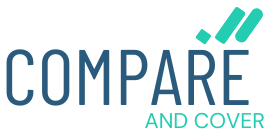Welcome to the world of the open road!
Getting your first car is thrilling—freedom, independence, road trips. But before you hit the accelerator, there’s one important stop: choosing the right auto insurance. If you’re a new driver—whether you’ve just turned 16 or you’re an adult recently added to a policy—expect a bit of a sticker shock. Insurers see new drivers as high risk, and premiums reflect that.
But don’t worry! With the right strategy, you can find a fair, reliable policy without draining your wallet. Here’s your ultimate roadmap to smart coverage.
1. Why New Driver Insurance Costs More
New drivers, regardless of age, usually pay more for insurance—here’s why:
-
Few (or no) driving records
Insurance providers rely on past behaviour to predict future risk. With a clean slate, they’re cautious. As you stay claims‑ and ticket‑free over time, your rates improve. -
Teens are statistically riskier
Drivers aged 16–19 have the highest accident rates, pushing premiums skyward. For example, adding a 16‑year‑old to a parent’s policy can cost around $250/month. -
Territory matters
Living in a busy city with more traffic and theft risk equals higher premiums. Even your ZIP code makes a difference . -
Your vehicle’s impact
A flashy sports car? Expect a heftier bill. Safer, older cars with fewer theft claims are cheaper to insure.

2. Coverage 101: What You Really Need
Insurance jargon can be overwhelming. Here are the essentials:
-
Liability insurance – Mandatory in most states. Covers damage and injuries to others if you’re at fault. Minimum limits vary (e.g., 25/50/15 in Arizona vs. 15/30/5 in California).
-
Collision + Comprehensive = Full coverage – Pays for damage to your vehicle from an accident (collision) or other causes like theft, storms (comprehensive).
-
Add-ons worth considering:
-
Uninsured/Underinsured Motorist – Covers losses if the other driver can’t pay.
-
Gap insurance – Fills the gap if your financed car is totalled before it’s paid off
-
3. Prime Options for New Drivers
Here are some trusted insurers frequently offering competitive rates for new drivers:
🏆 Nationwide
-
Known for Good Student, Accident Forgiveness, and SmartRide usage‑based discounts.
🚙 State Farm
-
Largest U.S. auto insurer. Great starter discounts—Safe Driving, Driver Training, Good Student (up to 25%).
🏁 GEICO, Progressive, Allstate
-
GEICO and Progressive often appear on lists for new drivers (Zebra, Insurify). Allstate is noted for teen packages.
🎖 USAA
-
If you have military ties, this exclusive provider is an all‑star—lowest average premiums, top service (though limited membership) .
🌍 Regional players
-
Companies like Allied ($202/month average for new drivers) or Erie (top for smallest premiums) may offer great regional deals
4. Real Costs You Might See
-
Allied: ~$202/month ($2,424/year) – among the lowest, depending on your area.
-
Nationwide: ~$225/month ($2,699/year) .
-
GEICO: ~$230/month.
-
Progressive: ~$263/month.
-
State Farm: ~$239/month.
For teen drivers, Erie offers minimum coverage as low as $181/month—significantly below average
🧾 Must-Have Coverage for First-Time Drivers
Coverage requirements vary by state, but here are the key coverage types every rookie needs:
-
Liability Insurance
Required in almost all states—helps cover bodily injury and property damage you cause to others. -
Collision Coverage
Pays for damage to your own car after a crash. -
Comprehensive Coverage
Covers damage not caused by an accident (e.g., theft, vandalism, weather events). -
Uninsured/Underinsured Motorist
Protects you if you’re in an accident with someone who has little or no insurance. -
Medical Payments or Personal Injury Protection (PIP)
Covers medical bills for you and your passengers, and PIP can also include lost wages or rehab costs.
Note: If you’re leasing or financing the vehicle, lenders typically require collision and comprehensive coverage until the loan is paid off.
💰 Get Smarter with Discounts & Tech
A. Scholarships on the road:
-
Good driver/student discounts apply automatically or when grades are B+ or better.
-
Safety courses, like driver’s ed, often yield premium cuts .
B. Tele metrics to your rescue:
-
Devices/apps like Progressive’s Snapshot, State Farm’s Drive Safe & Save, or Nationwide’s SmartRide can slash rates—safe-driving rewards range 10–50%.
C. Pay‑as‑you‑drive plans:
-
If mileage is low, metered plans (like Metromile) charge per mile, ideal for occasional drivers.
D. Bundle for big savings:
-
Combine auto + renters/home policy with the same insurer for 5–20% added discount.
E. Boost deductible:
-
Boosting your deductible to $1,000 can shrink your premium by ~20%

How to Shop Strategically
-
Start broadly – Compare quotes through platforms like Insurify, The Zebra, NerdWallet—they pull rates from 50‑120+ insurers at once.
-
Match “apples to apples” – Compare liability limits, deductibles, and coverage types exactly to make a fair comparison .
-
Check insurer health – Review financial ratings and customer complaint scores.
-
Annual check‑up – Re‑shop every year. Life changes (like moving or graduating) can open better deals.
-
Document thoroughly – Have your license, VIN, student records, defensive driving certificates ready to unlock discounts quickly.
Understanding Deductibles: How Much Risk Can You Handle?
A deductible is the amount you pay out of pocket when you have a claim. More risk equals lower premiums, but also higher potential costs after a crash.
-
Higher deductible (e.g., $1,000): Lower monthly payments, but you’ll pay more in a claim.
-
Lower deductible (e.g., $250): Higher monthly payments, but less to pay if something happens.
First-time drivers should:
-
Choose a deductible you can afford in a pinch.
-
Balance savings on premiums with the risk of paying out of pocket.
Common Questions 🤔
How early should I get coverage?
Get insured before you even take the first drive. Most states require coverage as soon as your permit is active.
Should I buy full coverage for an old car?
If your car’s worth less than your deductible, skip collision/comprehensive. Only liability? Sure—just check lender requirements .
Can gender affect rates?
Yes—except in states like CA, MA, MI, NC, PA and HI where gender-based pricing is banned.
Is usage‑based tracking a privacy concern?
It can be—telematics record speed, mileage, timing. But most drivers feel the savings are worth it .
Checklist Before You Sign
Before clicking “Buy,” run through this checklist:
-
Quote compared across at least 3–5 insurers
-
Discounts explored/confirmed
-
Coverage matches your budget + vehicle value
-
Deductible aligns with your risk tolerance
-
Company’s reputation is solid (BBB, J.D. Power)
-
Policy renewal triggers a new quote comparison
Rider Stories – What Saved Them Money
Sophia (18) got Erie for liability-only at $185/month—$65 less than her mom originally estimated.
Lucas (20) enrolled in Progressive Snapshot, kept his phone down, drove cautiously—and saw a 30% cut within six months.
Maria (16) earned a good‑student discount with Nationwide, saving more after Defensive Driving Class.
✅ Final Thoughts: Find Smart Coverage and Drive with Confidence
Getting insured as a first‑time driver isn’t just about meeting legal obligations—it’s about protecting your future with smart choices. Here’s a quick wrap‑up:
-
Always shop around—don’t settle for the first quote.
-
Stack discounts—student, safety, telematics, bundling all add up.
-
Choose coverage that makes sense for your car’s age and your financial buffer.
-
Keep an eye on premium increases and be ready to re‑shop.
-
Grow with the insurer—your record improves, and so should your rate.
With the right mix of planning, discounts, and regular reviews, you can hit the road confident and covered—without breaking the bank. Safe travels and smart driving!






